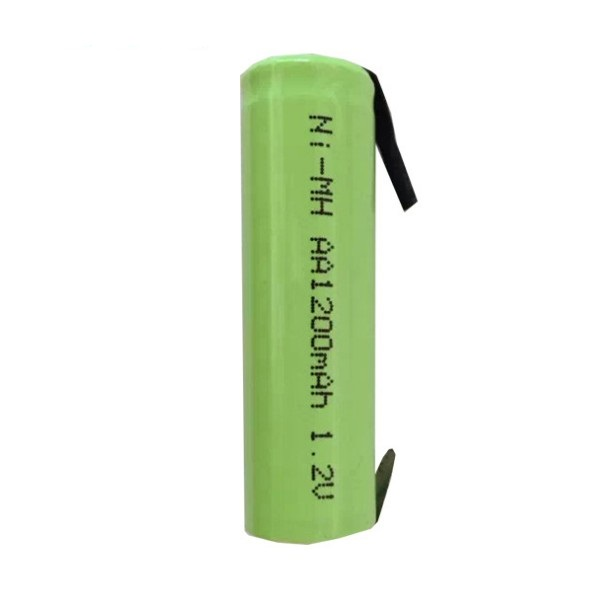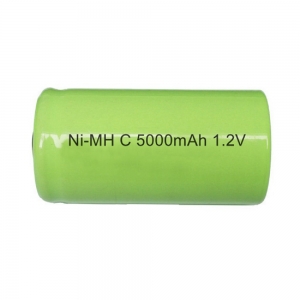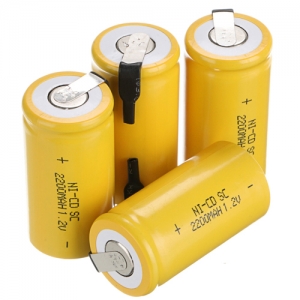Categories
Contact Us
Fax:0755-8352 6624
Email:sales08@cestpower.com
Add:Block F, Hengtai Industrial Park, No 56, Guan yuan Road, Guangming District, Shenzhen, China
rechargeable ni-mh 1.2v nimh nickel metal hydride aa 14500 1500mAh 2000mAh 2200mAh 2500mAh aaa 10440 400mAh 600mAh 700mAh 800mAh 1000mAh 2/3a 3/4a 4/5a 4/3a 17670 battery cell with pin
Product Description
Features of A and AAA NiMH batteries
Voltage and Capacity: AA and AAA NiMH batteries typically have a nominal voltage of 1.2 volts, which is lower than the 1.5 volts of alkaline batteries. However, they compensate for this by having higher capacity ratings, ranging from 300mAh to 3500mAh. This means they can deliver more power for longer periods, making them ideal for high-drain devices such as digital cameras, flashlights, and portable game consoles.
Chemistry and Construction: AA and AAA NiMH batteries use a nickel-metal hydride chemistry, which is safer and more environmentally friendly than NiCad's cadmium-based chemistry. They also have a spiral-wound construction that enables them to handle high currents without overheating or exploding.
Size: AA and AAA NiMH battery is a standard size for batteries, AA and AAA NiMH cells come in various capacities, including 2500mAh. This means you can easily find replacement batteries for your devices that are compatible with this size.
Voltage: AA and AAA NiMH battery has a nominal voltage of 1.2V, which is lower than disposable alkaline batteries (1.5V). However, most electronic devices are designed to work with this voltage, and you won't notice any significant difference in performance.
Charging Time: The charging time for AA and AAA NiMH battery depends on the charger's capacity and the amount of energy left in the cell. Typically, it takes around 2-6 hours to fully charge a NiMH battery.
Cycle Life: AA and AAA NiMH batteries have a limited number of charge cycles, which means they will gradually lose their capacity over time. However, AA and AAA NiMH battery have a cycle life of around 500-1000 cycles, depending on the usage conditions and charging habits.
Self-Discharge Rate: AA and AAA NiMH batteries have a higher self-discharge rate compared to alkaline batteries, meaning they lose charge even when not in use. However, modern AA and AAA NiMH batteries have low self-discharge rates, typically between 10-20% per month, which makes them suitable for low-drain devices such as remote controls and wall clocks.
Cost-Effective: Although AA and AAA NiMH batteries are more expensive initially, they offer significant cost savings in the long run. By being rechargeable, they eliminate the need for frequent battery replacements, which can be costly over time.
Versatile Applications: AA and AAA NiMH batteries are compatible with a wide range of devices, including toys, digital cameras, flashlights, wireless keyboards, and gaming controllers. Their high capacity and long run time make them suitable for high-drain devices, while their low self-discharge rate makes them ideal for low-drain devices.
Proper Handling of AA and AAA NiMH Battery Cells
Charging
AA and AAA NiMH batteries should be charged using a compatible charger that delivers the appropriate voltage and current. Overcharging or undercharging can damage the battery, reduce its capacity, and pose a safety hazard.
Storage
AA and AAA NiMH batteries should be stored in a cool, dry place away from direct sunlight and heat sources. If not used for an extended period, they should be charged to prevent self-discharge and maintained at a storage charge level of around 40-50%.
Disposal
AA and AAA NiMH batteries should be disposed of properly to prevent environmental pollution. They can be recycled or disposed of at designated collection points or recycling centers.







 Cestpower
Cestpower